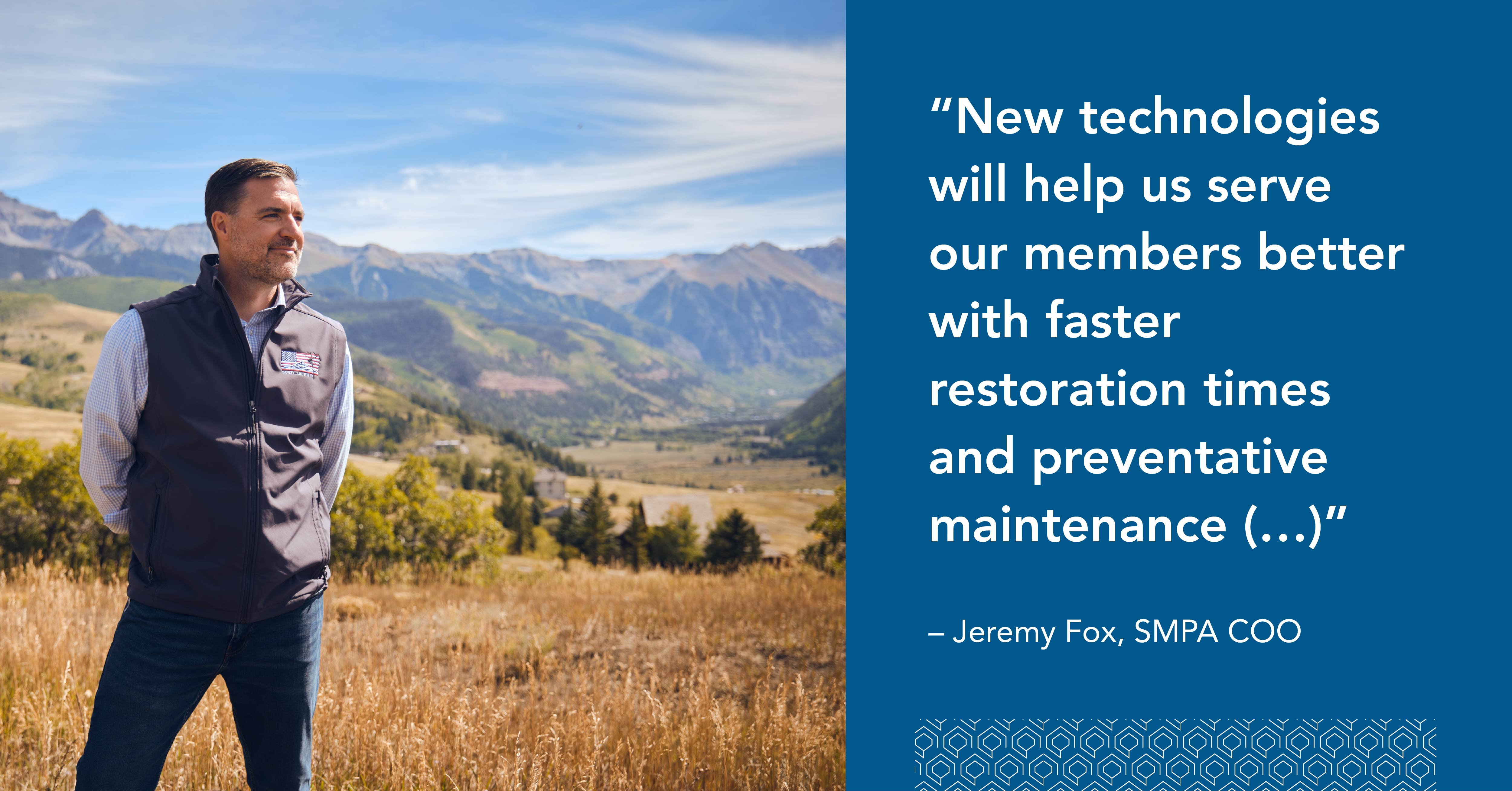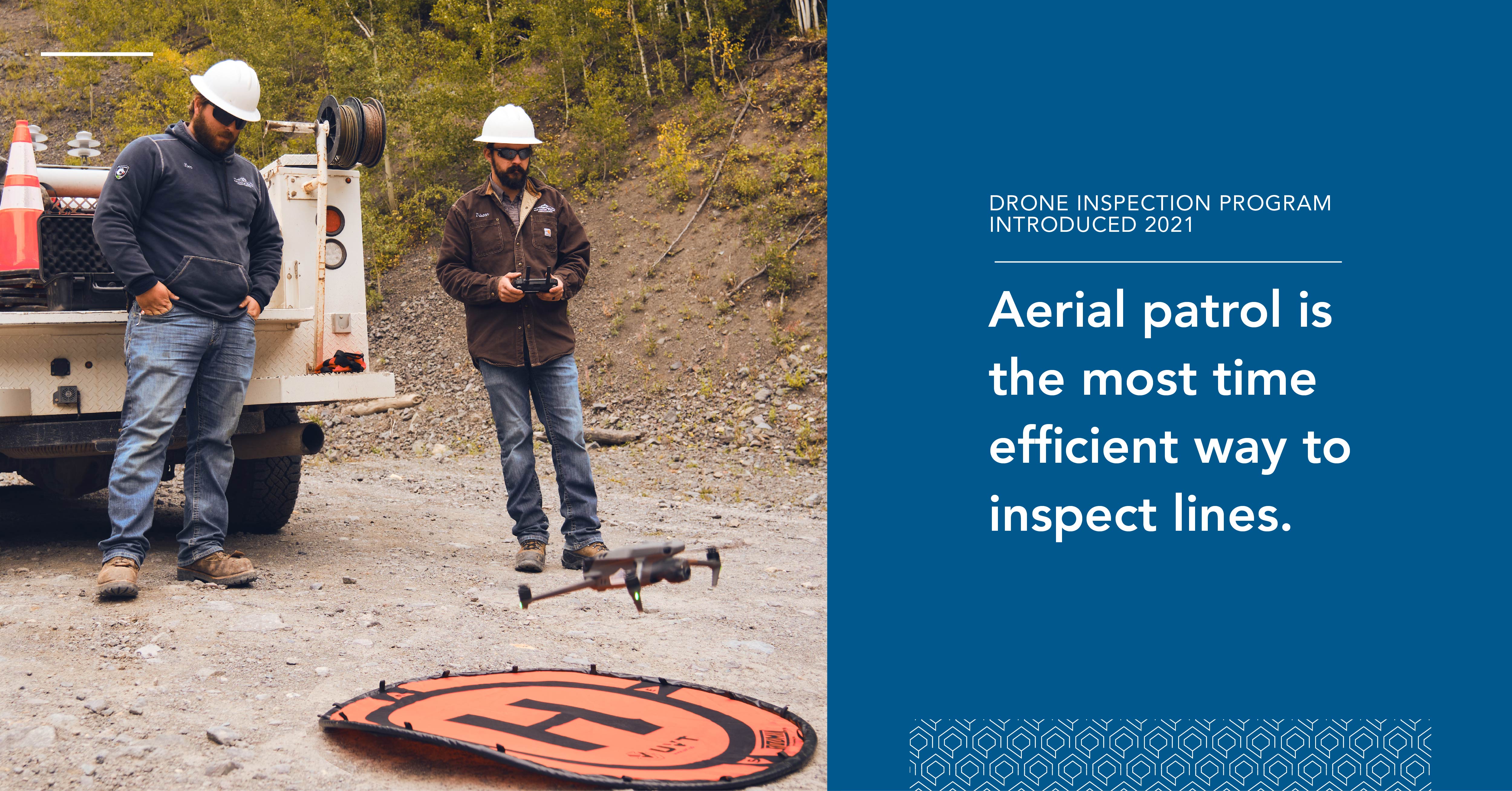
SMPA is Pioneering Fire Mitigation Efforts on Colorado’s Western Slope
Electric utilities play a critical role in society by providing the essential service of electricity. However, this service also carries significant responsibilities, especially in areas prone to wildfires. Wildfires have a massive impact on electric utilities in several ways including structural damage, power outages, and increased costs. For those living in wildfire areas, it’s a growing concern.
Enhancing Reliability and Resilience: SMPA's Fire Mitigation Strategy in Western Colorado
San Miguel Power Association (SMPA) serves seven counties in Western Colorado covering approximately 3,600 square miles, nearly the size of Delaware and Rhode Island combined. Their service territory spans rugged mountain terrain and includes two of Colorado’s favorite mountain towns, Telluride and Ouray.
Roughly three years ago, SMPA’s Board of Directors tasked COO Jeremy Fox with the strategic objective of identifying and prioritizing reliability and resiliency risks and issues with a focus on fire mitigation. At the time, SMPA didn’t have a formal fire mitigation plan, so Fox began working with SMPA engineers and external consultants to write and implement a strategy. It was evident that there was a need to explore different pilot programs and introduce new technology to their system.
“We have very rugged terrain with unique environmental conditions,” said Fox. “New technologies will help us serve our members better with faster restoration times and preventative maintenance that will see us into the future.”

Fox recently learned about Pano AI, Inc., a rapid detection technology that uses 360-degree cameras placed on high locations to detect threats, confirm fires, and disseminate information to responders. Pano AI combines ultra-high-definition cameras, geo satellite data, field sensors, legacy cameras, emergency alerts and other data feeds in real-time to quickly identify and contain wildfires. Before he could pitch the technology himself, Fox was approached by Telluride Fire Chief John Bennett to form a partnership and launch the program.
“The partnership really works, we share the same goals and long-game objectives,” said Chief Bennett. “San Miguel Power is being very proactive about protecting their residents.”
According to the Pano AI, Inc. website, the early minutes of a fire are critical, and initial response time determines the ultimate threat to lives and property. With most wildfires detected by bystanders and reported via 911, it can take hours to detect a fire, verify its exact location and size, and dispatch first responders.

SMPA and the Telluride Fire Protection District worked together to fund and introduce Pano AI to the Telluride area. The cameras were installed in 2023 and will be deployed by the end of the year. As a pilot program, SMPA will spend time testing the equipment before expanding the program to the rest of its service territory.
“So far, we’ve only worked on this program with the Telluride Fire Protection District, but we have several entities interested as the program grows,” Fox explained. “We hope to work with the U.S. Forest Service and Bureau of Land Management as we expand the program.”
Vegetation Management a Critical Aspect to Wildfire Prevention
In addition to early fire detection, vegetation management is a critical aspect of wildfire prevention and control. It involves various strategies and techniques aimed at reducing the fuel load, altering the fire behavior, and protecting communities and natural resources from the devastating effects of wildfires.
Vegetation management is based on inspection through standard maintenance protocol. For example, every line is inspected regularly, either by ground or aerial patrol. In terrain as rough as SMPA’s service territory, aerial patrol is the most time-efficient way to inspect lines, which is why they introduced the Drone Inspection Program in 2021.

The use of drones for vegetation management was a new concept at the time and came with learning curves, including training staff and jumping through licensing hoops. They began with one drone and quickly grew the fleet to four, with ten licensed drone operators on staff. Drones are ideal because they’re quick to deploy and operate in high elevations. They’ve had several examples of success in areas that line workers were unable to access, but drones were able to get in and identify needs.
As a member of Tri-State, SMPA isn’t alone in its vegetation management efforts. Recently, Tri-State completed a massive vegetation management project in SMPA’s service territory that removed several tons of vegetation that was posing a risk to its transmission system. Tri-State allocates large funds for vegetation management, especially in wildfire-prone areas like Colorado’s western slope.
“We’re lucky to get that allocation,” Fox acknowledged. “That’s where we see a huge benefit in membership with Tri-State.”
Fire mitigation is an ongoing effort that requires collaboration among communities, local authorities, utilities, and individuals. With the increasing threat of wildfires, it is crucial to prioritize prevention and preparedness to protect communities’ access to power in Western Colorado.
--
About Tri-State
Tri-State is a power supply cooperative, operating on a not-for-profit basis, serving electric distribution cooperatives and public power district member-owners in four states. Together with our members, we deliver reliable, affordable and responsible power to more than a million electricity consumers across nearly 200,000 square miles of the West. Visit www.tristate.coop.
About San Miguel Power
San Miguel Power Association, Inc. is a consumer-controlled rural electric cooperative with offices in Nucla and Ridgway, Colo. It is the Mission of the San Miguel Power Association, Inc. to provide our members with safe, reliable, cost-effective, and environmentally responsible electrical service while demonstrating both co-operative responsibility and support for the communities we serve. SMPA serves approximately 10,000 members and 15,000 meters and supports local communities with over $300,000 annually in property taxes, over $100,000 in energy efficiency and renewable energy rebates and over $80,000 in scholarships, community donations and economic development grants. San Miguel Power Association is an equal opportunity provider and employer.
Blog Posts

The Future of EVs: Air, Water, and Land

Benefits of Installing an Attic Fan for Summer

How to Prepare Your Home for a Summer Heat Wave

E-Bike Friendly Trails in our Member Service Territories

Save Energy and Money This Summer with a Smart Thermostat

How to Electrify Your Outdoor Camping Adventures

Tips for Installing an EV Charging Station at Home

Summer Storm Safety Tips for Camping

